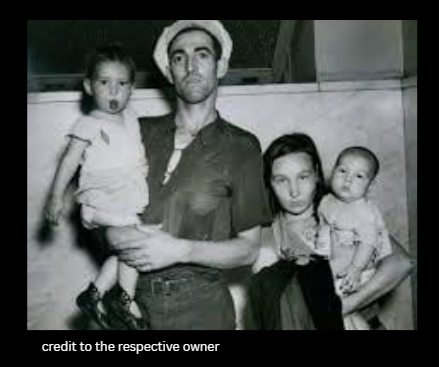In the chilly spring of 1936, the Holt family found themselves on a Minneapolis street corner, a world away from the sunshine of Vista, California. Their long trek had carried them across Texas and through Chicago, each mile bringing new uncertainty, yet still no promise of steady work or a place to call home.
Most of their journey had been made by the kindness of strangers—hitchhiking mile after mile, hoping for a break.
A photograph from that time immortalized their struggle: May Holt, the mother, her face lined with determination and concern, while her three youngsters—Herman, Ida Belle, and Jack—clung close, too exhausted to muster a smile. The road had sapped their energy, but not their resolve.
Once in Minneapolis, small acts of compassion reached out to them. A police matron took them in, providing warm baths and nourishing meals. The Travelers Aid Society stepped in, arranging a simple room at the St. James Hotel—a brief sanctuary where they could rest and recover. It was modest, but it offered safety and a hint of comfort.
Their story was repeated by countless American families in those grim Depression years: days filled with endless travel, pockets emptied of hope, always chasing the faint promise of employment in some distant town. Yet, for a brief instant on that Minnesota sidewalk, the Holts were noticed—aided, uplifted by the generosity of strangers.
The Minneapolis Tribune published their image that year. The photo couldn’t alter their path, but it did capture their reality—a mother, her children, and a nation forever searching for a better tomorrow.